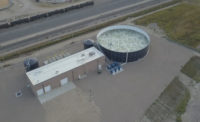Sustainability is not solely focused on environmental impact but also includes economic and social impact — the triple bottom line that creates healthy people, healthy communities and a healthy planet. If a solution is good for the environment but not economically feasible, it is not sustainable from a business standpoint.
Forty-four percent of frequent milk users have expressed an interest in environmentally friendly milk. In addition to consumer demand, fluctuating energy prices incentivize every segment of the dairy supply chain to consider the business case for sustainability. Dairy transporters can reduce operating costs and help ensure that consumers can continue to feel confident about choosing their favorite dairy foods and beverages first by measuring the impact (to provide a baseline), and second by making commitments to reduce energy use.
Dairy Fleet Smart, a free online tool available from the Innovation Center for U.S. Dairy in collaboration with the U.S. Environmental Protection Agency’s SmartWay program, is available online at USDairy.com/FleetSmart for dairy fleet managers to measure and improve their fuel efficiency.
A customized version of SmartWay assessment tools, Dairy Fleet Smart is easy to use; provides standard documentation; allows for benchmark comparison to industry averages; facilitates the identification and calculation of savings; and provides response to increasing reporting requests from customers and consumers.
What to measure
Dairy Fleet Smart provides a roadmap to optimal energy efficiency by identifying ideal areas of improvement and helping the user determine the resources needed to achieve reduction goals. Users are guided through a simple three-step process:
1. Learn about proven best practices
2. Calculate your carbon footprint
3. Develop an action plan
After entering fleet data — including number of trucks, annual distance traveled, average fuel price, annual fuel consumption, weight transported and number of trips — Dairy Fleet Smart calculates the operation’s carbon footprint and compares it to the national average.
Fleets are then encouraged to develop an action plan by reviewing case studies and best practices, and by joining the EPA SmartWay program. Currently, 15% of SmartWay’s tanker fleet participants are involved with dairy and milk transport.
Best practices for improvement involve implementing new technologies on trucks, driver training and routing efficiencies. Once an action plan is in place, transportation companies can track their progress and communicate their sustainability successes to the industry.
Energy champions
Through the use of Dairy Fleet Smart resources, Ruan Transport Management Systems, Des Moines, Iowa, discovered that hauling larger loads at shorter distances optimized fuel usage and time. In doing so, Ruan reduced a major client’s transportation cost by 4%. By embracing sustainability measurement and reporting, the company has implemented multiple environmental efficiencies to its fleet, cutting costs and reducing emissions and energy use.
Ruan was recently recognized by the EPA SmartWay program with a 2012 SmartWay Excellence Award. It was one of 40 companies — representing less than 1% of SmartWay’s 3,000 partners — to receive this distinction as an industry leader in freight supply chain environmental performance and energy efficiency.
Tillamook County Creamery Association in Tillamook, Ore., developed a shipping and distribution plan for its 16-truck fleet after using Dairy Fleet Smart to calculate its carbon footprint. With little to no investment, Tillamook significantly reduced its travel distance by partnering with companies to help package cheese at locations closer to the customer.
The new shipping and distribution plan had an immediate payback in fuel savings. In total, Tillamook reduced fuel consumption by 152,000 gallons of No. 2 diesel, saving the association more than $2 million in fuel and reduced labor for transportation.
By utilizing the Dairy Fleet Smart tool and learning from success stories, dairy businesses can become leaders in long-term energy efficiency. Efforts by dairy transporters to measure and report their progress improves their sustainability and, ultimately, the sustainability of the industry.

